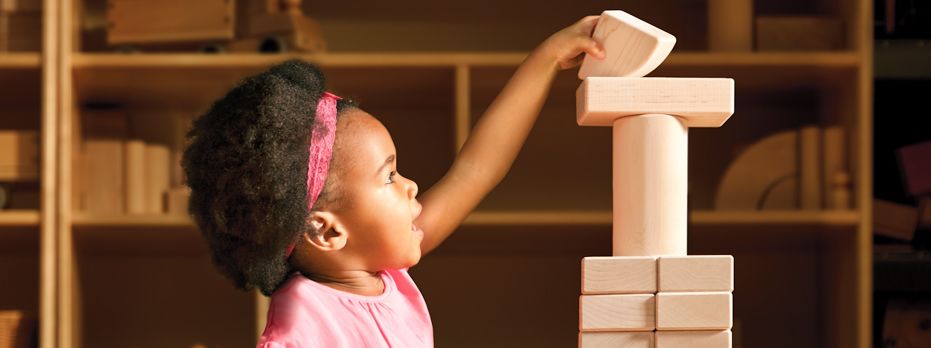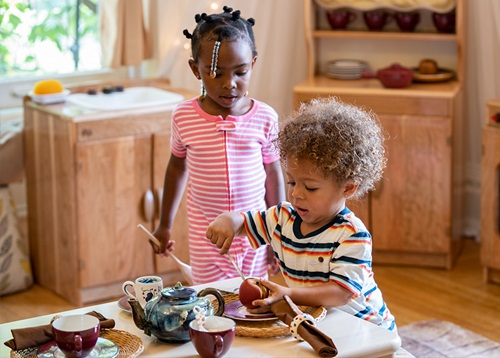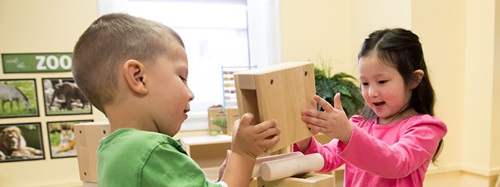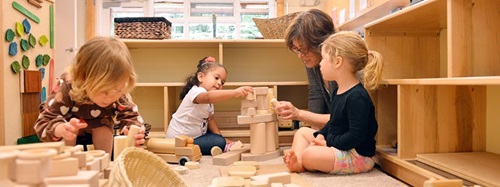Block Play, Math, and Literacy
| February 2005It’s been more than two hundred years since Friedrich Froebel introduced wooden shapes for children to explore, take apart, and put together. Since then, blocks have been shown to aid the development of young children. Jean Piaget’s theory of stages, for instance, tells us that children develop social, physical, and logico-mathematical knowledge through playing with manipulative materials such as blocks.
In the United States, block play took off at the beginning of the last century, through the pioneering work of Caroline Pratt, a New York City teacher who was frustrated by the “repressiveness of formal education”—and excited by the possibilities of letting children learn through constructive, open-ended play.
In 1983, Stuart Reifel identified 19 stages of block building that children evidence in their play. (They were first described by Guanella in 1934.) More recently, teachers and researchers at the Creative Pre-School in Tallahassee, Florida, have substantiated them.
When children play with blocks, they are practicing mathematical skills. In selecting blocks of different sizes and shapes and comparing surface volumes and areas, for example, they are unwittingly using classification and seriation (Hirsch, 1996). Cleaning up involves math too: sorting identical and dissimilar shapes, and organizing by size (Henniger, 1987).
Because it involves measuring lengths, widths, and heights (if only by eye), block play develops a child’s ability to mentally visualize relationships. Such manipulations are similar to those used in geometry and algebra during the child’s later school years (Henniger, 1987).
Constructive block play also involves the use of spatial configurations (Reifel, 1983), a vital aspect of mathematics and science generally (Casey, Pezaris & Nuttal, 1992). A study that evaluated the block constructions of four-year-olds (in 1982) and compared them with their test scores in high school (in 1998) supported the hypothesis that a child’s ability to create complex block constructions can predict mathematical ability. Interestingly, the study found a difference in achievement levels between boys and girls only when the boys were given greater exposure to blocks. When both were given equal opportunities to develop their skills, there were no gender-related differences (Stannard, Wolfgang, Jones, and Phelps, 2001).
In short, unit blocks do not only afford long-lasting play, but also fundamental educational lessons that will be invaluable in later life. Because of this, adults who work with young children would do well to learn the names of geometric shapes, the built-in mathematical concepts their children will draw on in playing with blocks, and the developmental stages exhibited by children during play. Unit blocks ought to be an integral part of every childhood.
All blocks are not equal. Here’s why you ought to take time to choose the best. First, poorly made blocks are frustrating for children to build with. Second, unit block measurements (“equivalencies”) allow the child to explore, even if unwittingly, the mathematical ideas of multiples or fractions. Be sure your set of small blocks matches your medium or large ones in terms of dimensions and proportions. In other words, make sure they are modular.
Finally, buy generously. When there aren’t enough blocks for children to complete the structures they have in mind, it not only frustrates them, but constrains them developmentally.






